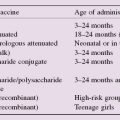Following the changes in permeability, the activation of complement and the influx of polymorphs, the last arrivals at sites of inflammation are the ‘mononuclear cells’: lymphocytes and monocytes (bottom left). Lymphocytes are usually specific in their attack, and only cause harm when attack is not called for (i.e. when the target is ‘self’ or a transplant), but monocytes and macrophages are equipped with enzymes that they normally use in the process of mopping up dead tissue cells and polymorphs, but which can also damage healthy cells, including other macrophages. When the stimulus is persistent, the result may be a growing mass of macrophages, or granuloma (bottom right), the hallmark of chronic inflammation.
These changes can occur in the absence of any specific immune response (e.g. reactions to foreign bodies; top right), but they are often greatly augmented by the activity of specific T lymphocytes (left) which, by secreting cytokines, attract and immobilize monocytes and activate macrophages. When this process is predominantly beneficial (as in healed tuberculosis) we speak of ‘cell-mediated immunity’ (CMI); when it is harmful (as in contact sensitivity or schistosomal cirrhosis) it is termed ‘type IV hypersensitivity’, the underlying mechanism being the same and the difference one of emphasis (compare with Fig. 21). Confusingly, direct killing by cytotoxic T cells is also called ‘cell-mediated immunity’, although because it mainly affects virus-containing cells, a better name would be ‘cell-mediated autoimmunity’ or, in the case of organ grafts, ‘cell-mediated transplant rejection’.
In any case, it is rare for one type of tissue damage to occur in isolation, interaction of cells and sharing of biochemical pathways being a feature of immune mechanisms, useful and harmful alike.
Cell-Mediated Immunity (CMI)
Contact between recirculating T cells and antigen leads to cytokine secretion with attraction and activation of monocytes and other myeloid cells (for further details see Fig. 21). In the case of persistent antigens, particularly with intracellular infections such as tuberculosis, leprosy, brucellosis, leishmaniasis, schistosomiasis (the egg granuloma), trichinosis and fungi such as Histoplasma spp., chronic inflammation may result. The principal cell type associated with CMI has long been thought to be the TH1 cell, via the release of IFNγ and other macrophage activating factors. However, more recently, attention has focused on the T17 cell (see Fig. 21), which seems to play a key part in mediating tissue damage in several infectious and autoimmune diseases, principally via recruitment of granulocytes.
Delayed-Type Hypersensitivity (DTH)
One of the key features of CMI, antigen-specific memory, can be tested in vitro
Stay updated, free articles. Join our Telegram channel

Full access? Get Clinical Tree




